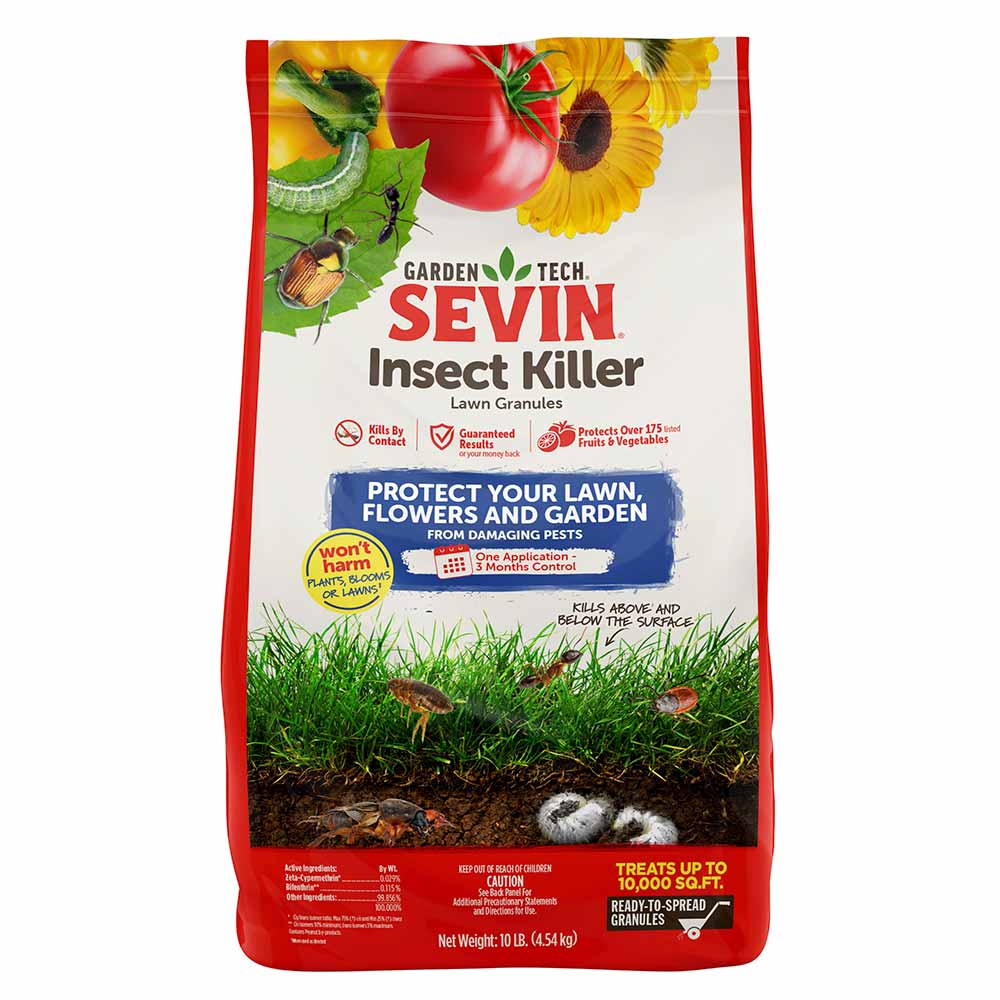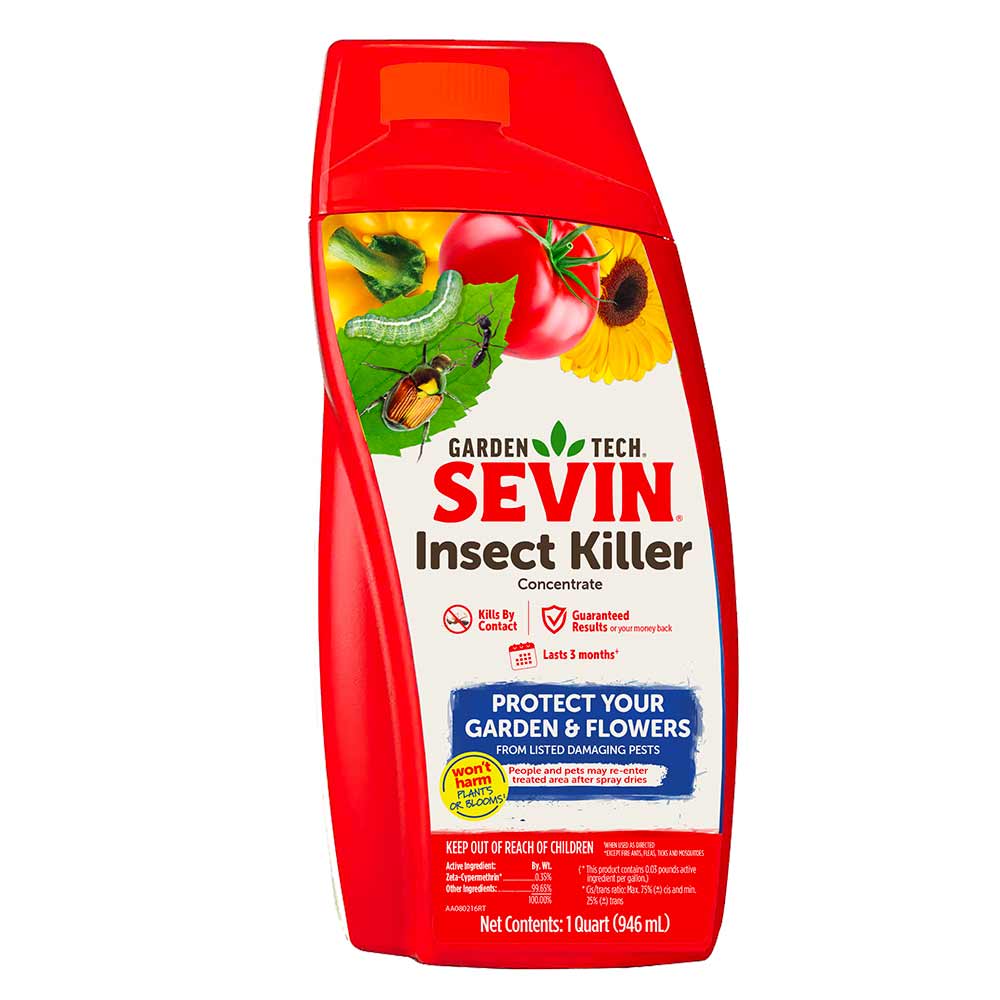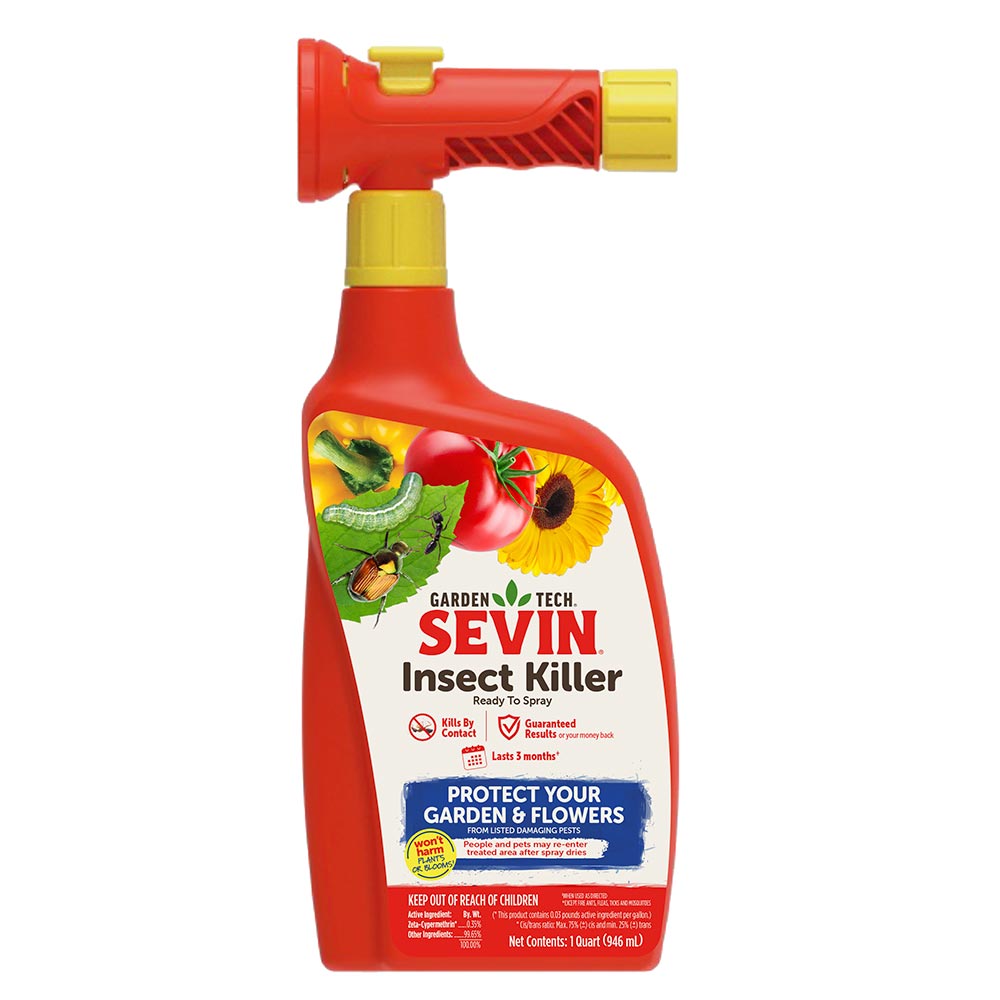Inchworms
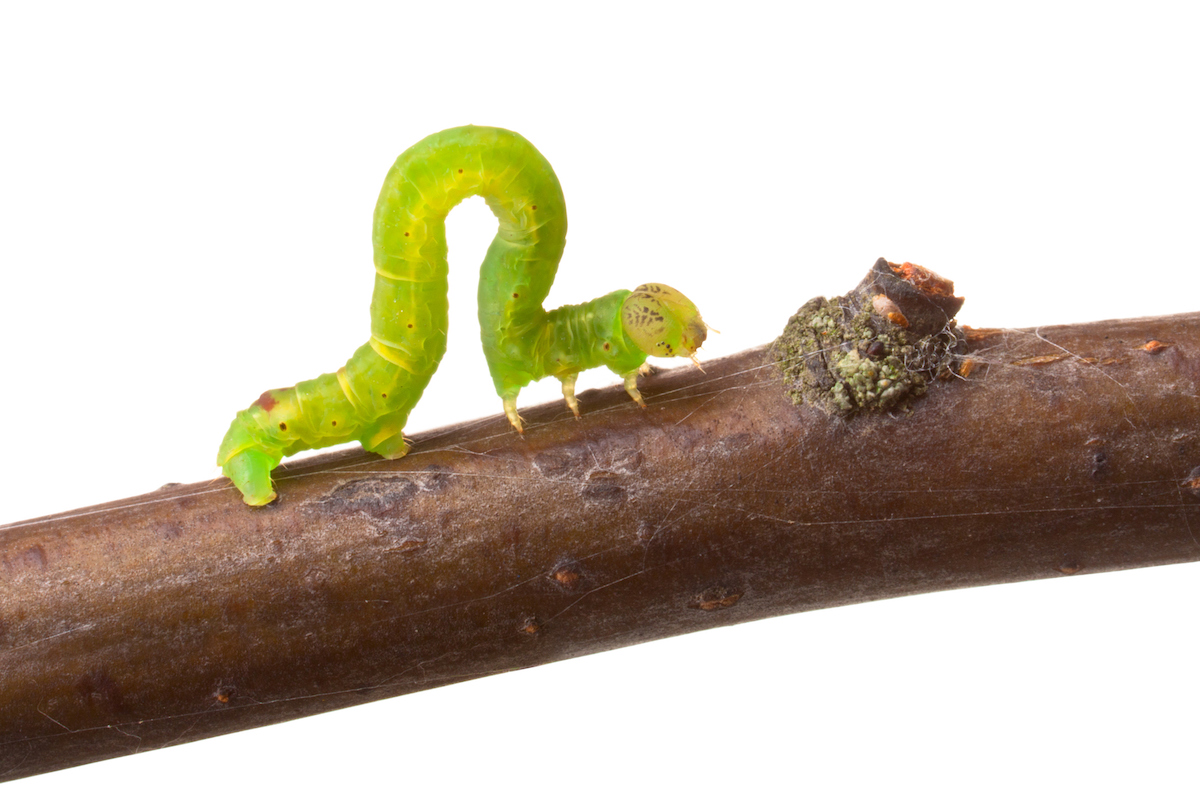

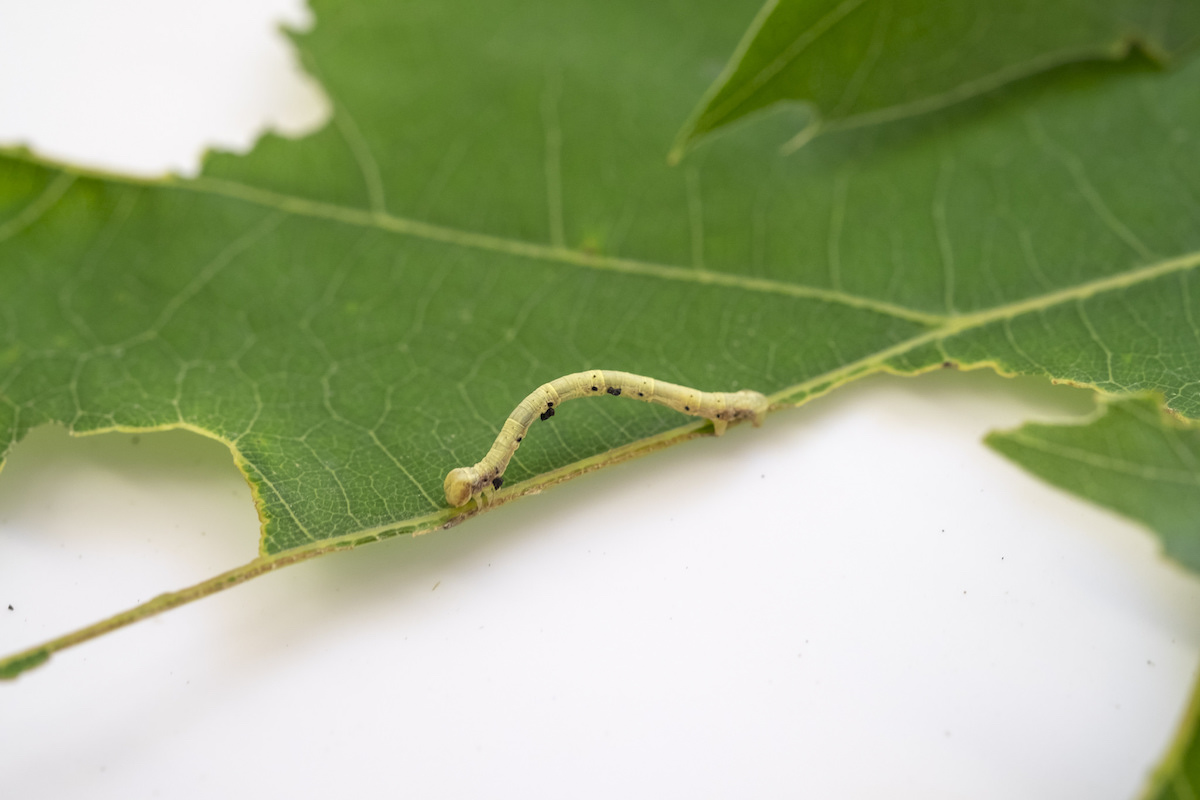
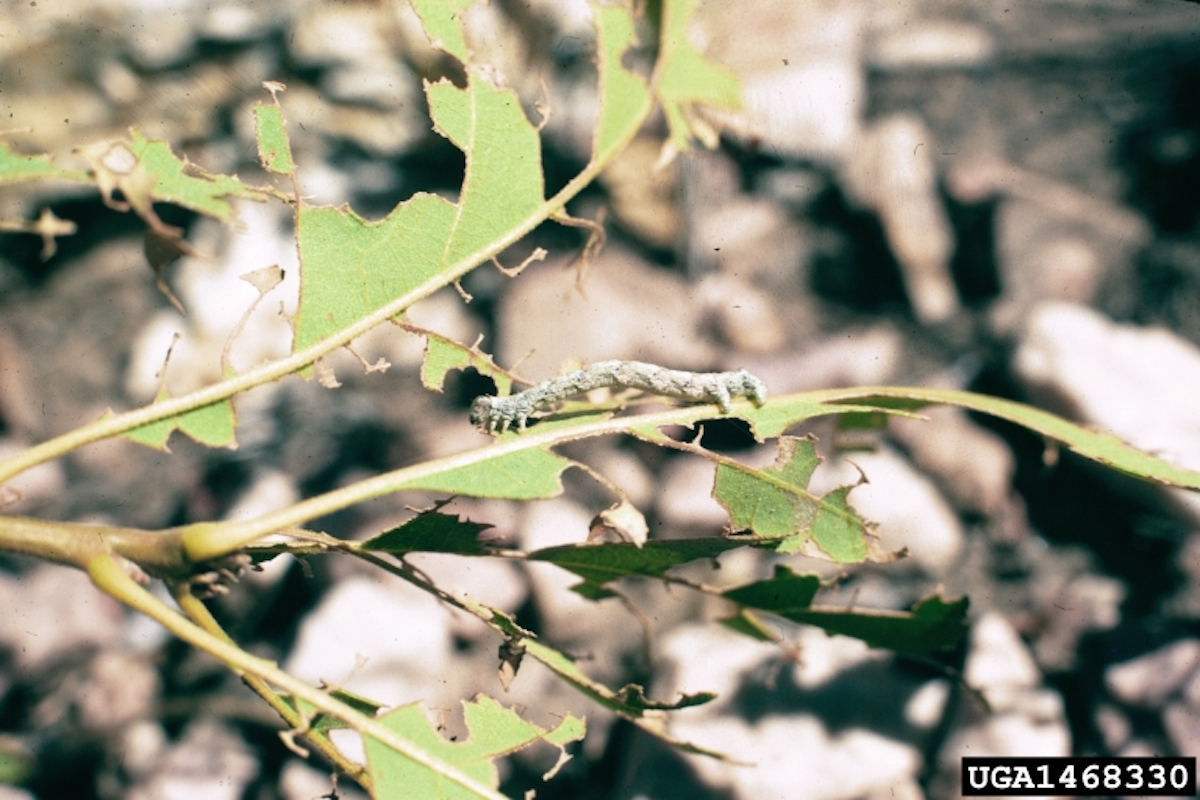
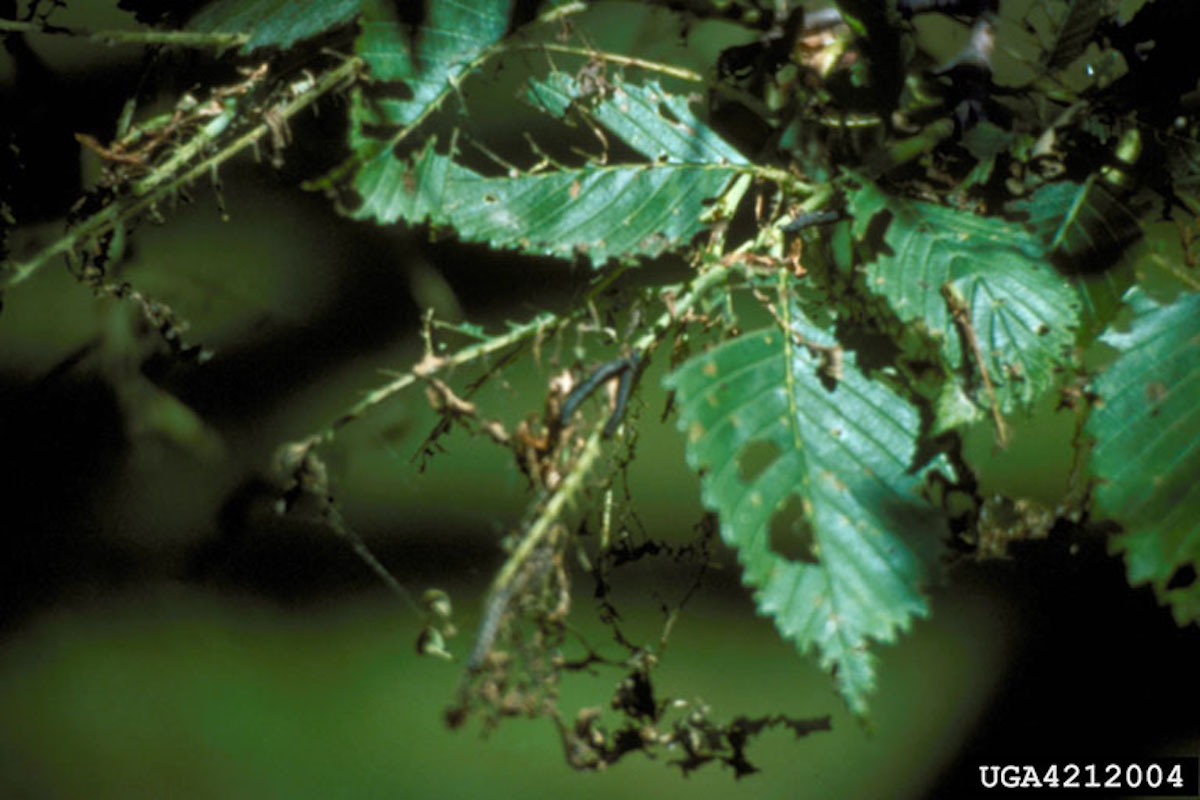
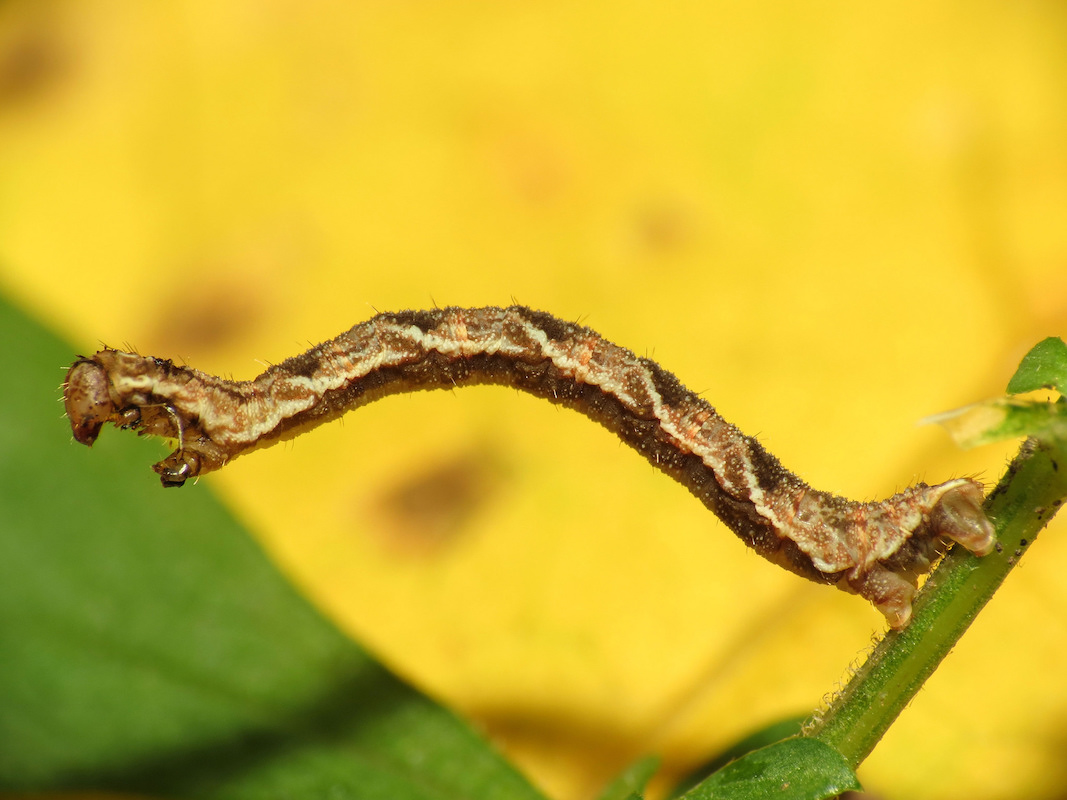
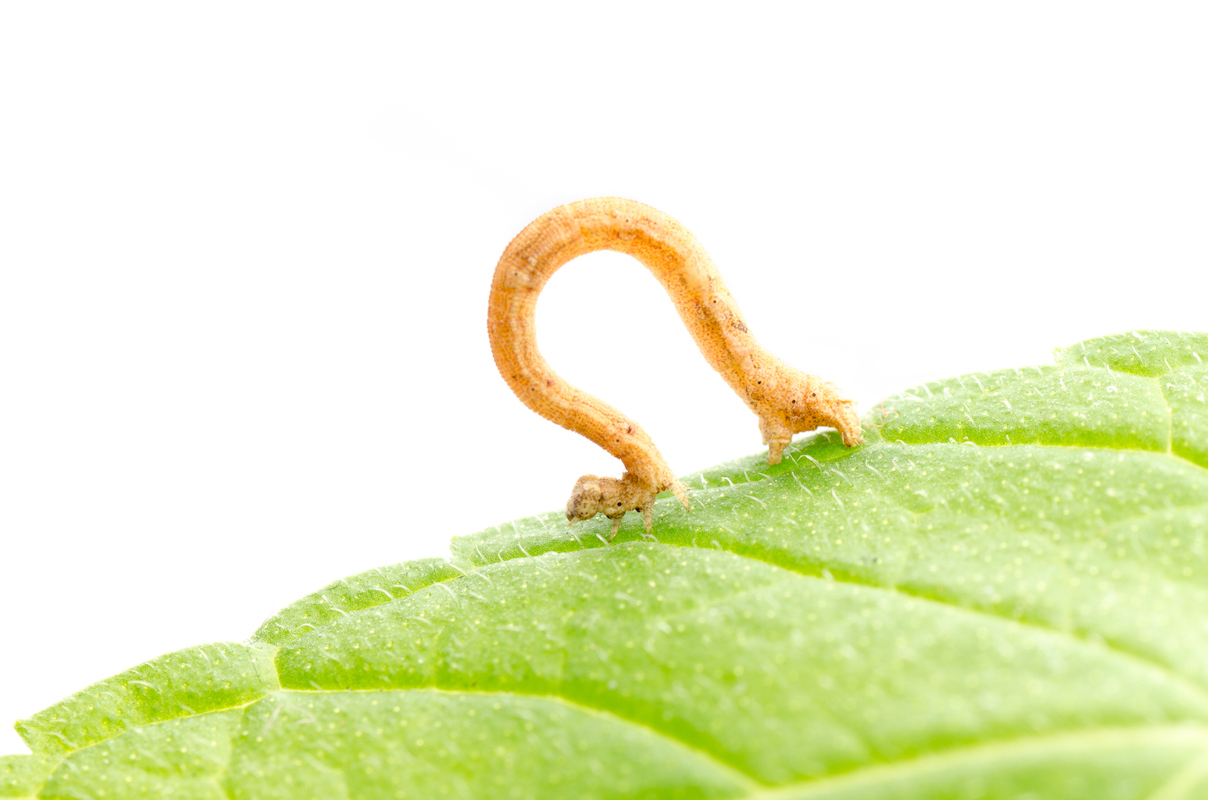
The common name "inchworm" applies to a large group of caterpillars that includes many different species of moth larvae. These small caterpillars charm children as they inch across the ground, but their damage to plants from garden edibles to shade trees can be devastating. In different regions throughout the United States, the common name inchworm may apply to native and non-native leaf-feeding caterpillars also known as spanworms, cankerworms, loopers, moth worms and measuring worms.
Inchworm Identification: Common caterpillars have a series of true legs and fleshy "prolegs" that support movement from head to tail. In contrast, inchworms have true legs at the front and prolegs at the rear with a legless expanse in between. To travel forward, inchworms take it one end at a time, as though they're measuring their route. First, the rear moves forward, causing the legless midsection to arch or "loop" up. Then the inchworm lifts and extends its front end, and the rear begins to move again.
Inchworm size depends on maturity and species, but they typically reach 1 inch long or more. Common colors include shades of green and brown, but vivid spots, stripes and patterns exist as well. Mature inchworm moths vary significantly, too. Colors range from dingy white, gray-brown or mint green to vibrant color combinations.
Signs/Damage of Inchworms: Inchworms are voracious leaf eaters that feed on plant foliage both day and night. Often found in large groups, they'll also feed alone. New leaves, leaf buds, flower buds, fruits and berries may all be targets. Damage ranges from large holes to nearly total defoliation. Weakened plants are then vulnerable to other pests and diseases. Affected edible plants may fail to produce harvests.
How to Control Inchworms: Depending on the species, inchworms may be found from ground level to tree tops. For large trees more than 10 feet high, consider hiring a professional for treatment. For smaller trees, vegetable and fruit gardens, lawns and ornamental gardens around your home, GardenTech® brand offers several highly effective products to kill inchworms by contact and keep protecting for up to three months:
- Sevin® Insect Killer Lawn Granules kill and control inchworms at soil level in lawns and gardens. Apply the ready-to-use granules with a regular lawn spreader. Then water immediately to release the active ingredients into soil where inchworms lie.
- Sevin® Insect Killer Concentrate provides an economical means of treating small trees and shrubs as well as lawns and gardens. Use the convenient measuring cup with a pump-style sprayer. Add water, mix well, and spray all surfaces, including tree trunks, thoroughly.
- Sevin® Insect Killer Ready to Spray attaches to a common garden hose and mixes and measures as you spray. This product provides simple, thorough coverage for lawns, gardens, shrubs and small trees to kill existing inchworms and protect against new invasions.
Tip: Many moth species with inchworm larvae overwinter in leaf debris near the plants where they'll feed. Keep gardens, foundation plantings and tree bases free of leaf debris to eliminate these hiding places.
Always read product labels and follow the instructions carefully, including guidelines for pre-harvest intervals and edible crops.
GardenTech is a registered trademark of Gulfstream Home and Garden, Inc.
Sevin is a registered trademark of Tessenderlo Kerley, Inc.
Is this not your insect?
View all Insects

